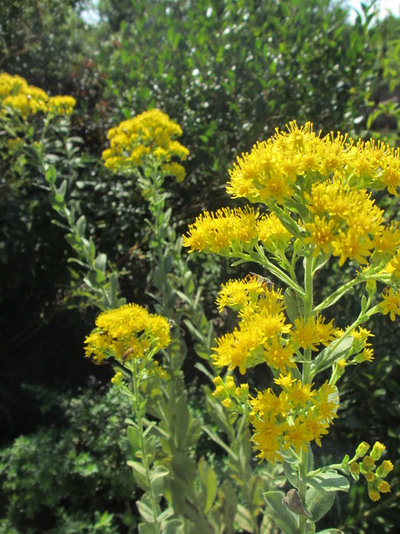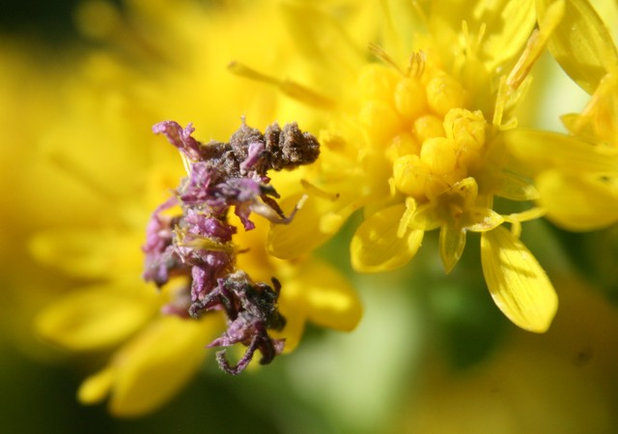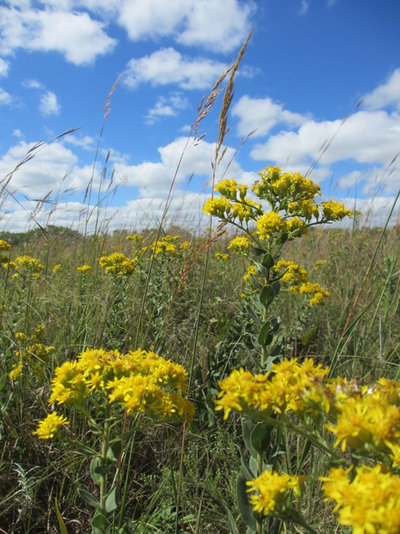Gardeners want fall blooms. Insects want fall blooms. I want fall blooms. The goldenrod genus (
Solidago spp) is one that will appeal to everyone, and unlike ragweed it won’t cause hay fever (the pollen is sticky and is not windborne). Stiff goldenrod (
Solidago rigida) is one of my favorites, due to its tidy umbel of blooms atop a tall stem and the incredible number of beneficial, pollinating insects it attracts. Simply put, if you have goldenrod, your garden will be the envy of lots of species, including our own.

Benjamin Vogt / Monarch Gardens
Botanical name: Oligoneuron rigidum (formerly known as
Solidago rigida)
Common name: Stiff goldenrod
Origin: U.S. native from New Mexico north to Montana and east to Indiana and Louisiana, with scattered pockets throughout the eastern U.S.
Where it will grow: Hardy to -40 degrees Fahrenheit (USDA zones 3 to 8; find your zone)
Water requirement: Slightly moist to dry soil
Light requirement: Full sun to partial shade
Mature size: 3 to 4 feet tall and 1 foot to 2 feet wide
Benefits and tolerances: Very low maintenance; superb architectural plant when in bloom; attracts tons of pollinators
Seasonal interest: Gorgeous seed heads in fall; tall height creates architectural interest
When to plant: Spring to fall; seed in fall or winter, though the seeds will need scarification to germinate

Benjamin Vogt / Monarch Gardens
Distinguishing traits. The umbels of stiff goldenrod make it different than other Solidago species. It blooms anytime between August and October, depending on climate (in southern locations it will bloom later). Goldenrods attract the looper moth caterpillar, which uses the petals to disguise itself (this one just came off a Liatris and will soon be exchanging its camouflage).
How to use it. This can be a single specimen plant or planted in groups or drifts of odd numbers for best effect. Placing it among taller grasses — like big bluestem (
Andropogon gerardi), switchgrass (
Panicum virgatum) or Indian grass (
Sorghastrum nutans)
— brings a bit of the prairie home. On a sunny day, you’ll see dozens upon dozens of various insects delighting in the nectar and pollen of this plant — it’s just incredible.

Benjamin Vogt / Monarch Gardens
Planting notes. Stiff goldenrod is fairly adaptable and very forgiving. It may self-sow in open ground, but it will have a much harder time reproducing in a mulched, thickly planted garden. Stiff goldenrod is a bit shorter in this image of a wild prairie, but in cultivated home gardens, it is often taller and tends to flop some; cutting it back in June to about 12 inches will encourage a bushier, stronger habit.
More: What to do in your fall garden
6 Native Goldenrods Worth a Second Look





